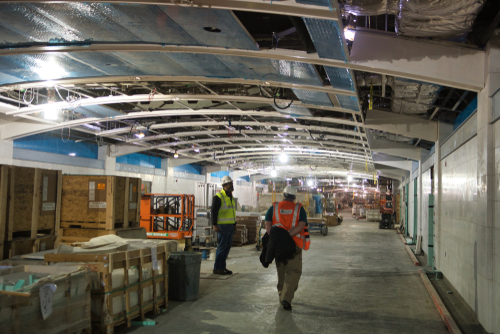Scheduled for completion at the end of 2022, the East Side Access Project will finally come to fruition after decades of planning and construction. One of the largest projects of its kind nationwide, the multi-billion dollar development will eventually bring LIRR passengers into Grand Central Station, making commutes into Manhattan more efficient for thousands of people. However, the East Side Access Project has not been without controversy over the safety issues — and accidents — that have arisen during construction.
East Side Access Project OSHA Violations
During the early stages of construction, the general contractor of the East Side Access Project was issued numerous citations for OSHA violations — including several alleging serious violations of workplace safety standards.
The safety issues found on site have ranged from a runaway rail car to lack of worker training in recognizing tunneling hazards. Inspectors also found a damaged ladder cage, unsecured compressed gas cylinders, and unprotected steel reinforcement rods protruding from the tunnel’s floors and walls. Several injuries and at least one fatality have occurred in connection with the East Side Access Project — all of which could have been avoided with proper safety measures in place.
Tunnel Construction Safety Precautions
Underground construction — such as in the East Side Access Project — involves many unique hazards that don’t necessarily arise in above-ground construction projects. Reduced lighting, scaffold collapses, lack of ventilation, exposure to contaminants, the potential for cave-ins, and minimal options for entering or exiting are just a few of the inherent risks that can make working in an underground tunnel substantially dangerous for tunnel workers known as “Sandhogs,” and others.
OSHA requires that workers involved in tunneling and underground construction, including blasting, drilling, and excavating, be specifically trained to identify safety issues that can create a dangerous working environment. OSHA recommends implementing training related to:
- Ventilation and monitoring air conditions
- Illumination
- Evacuation planning and other emergency procedures
- Maintaining effective communication
- Explosives
- Flood control
- Fire prevention and protection measures
- Mechanical equipment
- Check-in and check-out procedures
According to OSHA guidelines, safety protocol for working underground should include testing for oxygen, methane, and other flammable gases, and ensuring that fresh air is supplied to all work areas. Additionally, before any blasting or drilling occurs, equipment and the work area should be inspected to avoid the potential for accidents.
Tunnel Construction Accidents and Injuries
Tunnels are a significant part of the infrastructure of New York City — and the Sandhogs who work in them put their lives in peril every day.
Those who work on construction projects in tunnels can experience a number of injuries, including burns from electrocutions, broken bones from falls, and lung illnesses from inhaling contaminants during drilling. Sandhogs and other tunnel construction workers may also face an increased risk of suffocation or crush injuries due to the potential for cave-ins, lacerations from faulty machinery, and fatality in extreme cases.
In the event of injury, Workers’ Compensation can provide construction workers who were hurt on the job with medical benefits for their accident-related injuries, as well as a certain amount of lost wages. In cases involving a third-party’s negligence, an injured construction worker may also be entitled to file a personal injury action to recover any unreimbursed medical expenses and lost wages, as well as compensation for their pain and suffering.
Although Workers’ Compensation generally bars workers from suing their employer for negligence, there are often other parties on construction sites that may be held accountable for injuries that can arise, such as a sub-contractor, owner, architect, or engineer. A third-party may be held liable in a personal injury action for failure to properly train, provide safety gear, exercise necessary safety precautions, or adequately inspect a worksite prior to drilling, blasting, or other tunneling construction work.
Contact an Experienced New York City Construction Accident Attorney
If you’re a construction worker who was injured in a tunnel construction accident, you may be entitled to recovery for your damages. It’s important to consult with a knowledgeable construction accident attorney as soon as possible who can discuss your legal rights and remedies. Critically, there are statutes of limitation in every case by which your lawsuit needs to be filed to avoid having your claim forever barred — and much shorter ones if the City or one of its agencies should be a named party in the suit. The Dearie Law Firm, P.C. is skilled in handling a wide variety of construction accident claims to help ensure you obtain the maximum compensation you’re entitled to receive for your injuries.
The Dearie Law Firm, P.C. has convenient office locations in Manhattan, Brooklyn, and the Bronx, as well as mobile locations serving Brooklyn, Queens, Manhattan, the Bronx, Staten Island, Westchester, Rockland County, Nassau County, and Suffolk County. Contact us for a consultation.

